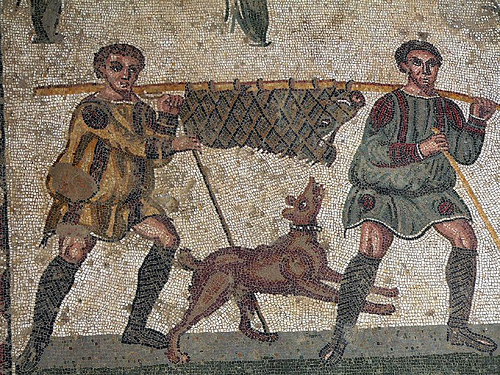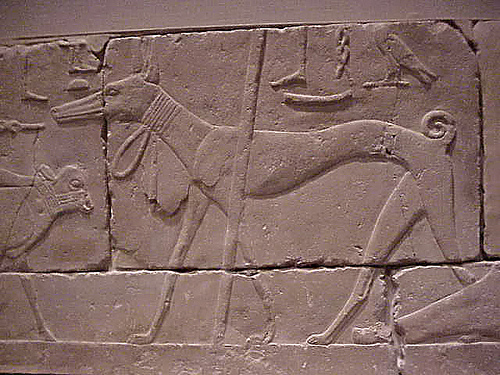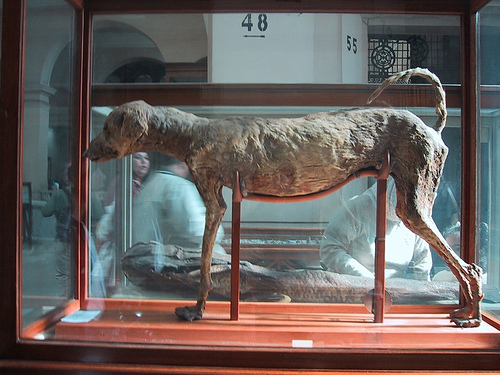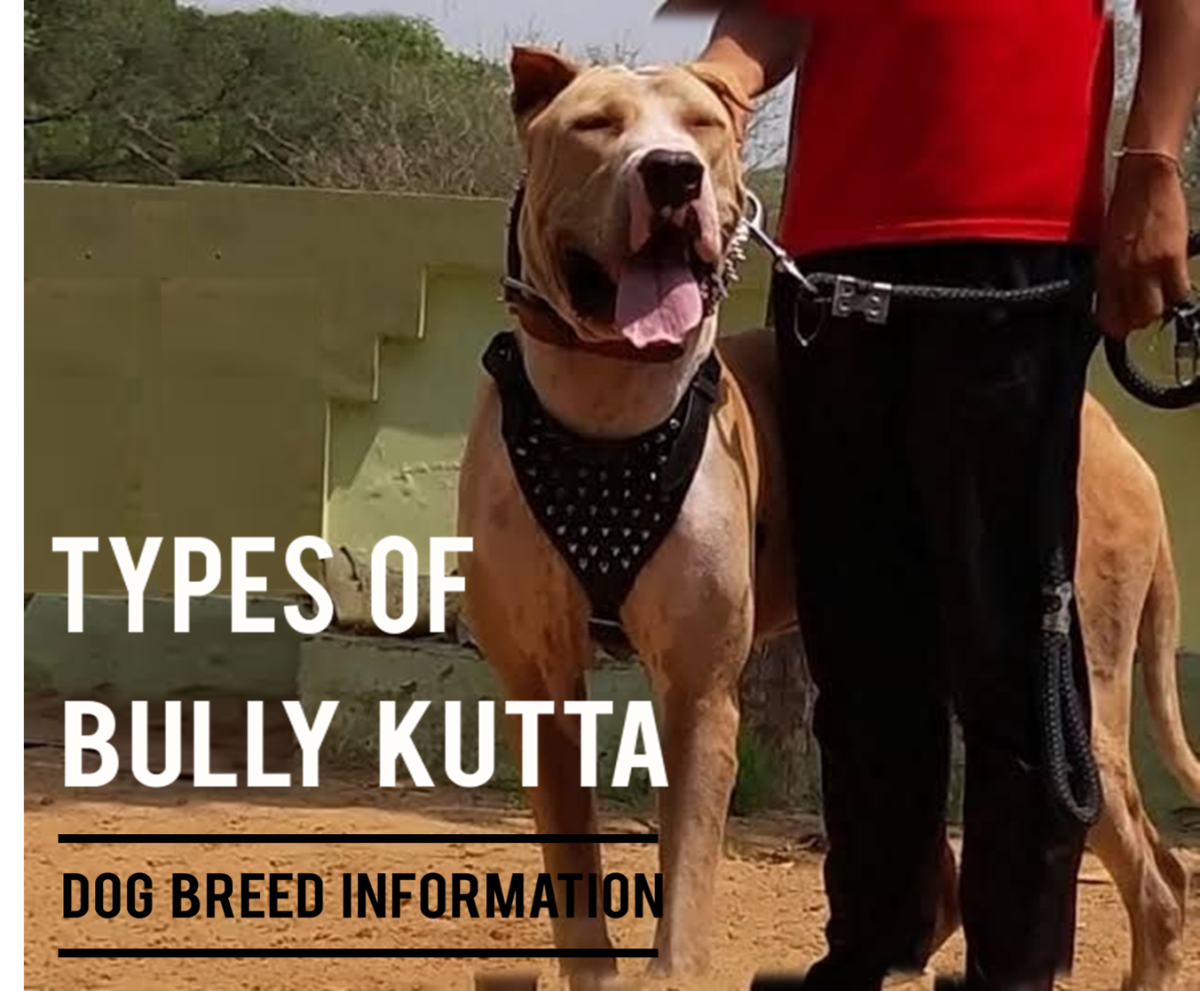History of the Domesticated Dog
Canis Genus
The history of man's association with the dog is a pretty interesting one that extends into the past at least 70 centuries and involves the early Stone Age men.
Dogs are technically a member of the genus Canis, which belongs to the zoological family group the Canidae, which includes wolves, foxes, jackals, and coyotes. In the past, it was generally agreed that the dog resulted from crossing various members of the Canidae family, but recent findings have amended this theory just a little. Most authorities, not believe that the jackal probably doesn't have any direct relationship with the dog, but that the dog has more similarities to the wolf, as the teeth are identical between the modern dog and the wolf and completely different than the jackal.
But, there are still other authorities insist that the dog has always been a separate and distinct animal. This group of authorities admit that it is possible for a dog to mate with a fox, coyote, or wolf, but point out that the puppies will not be able to breed with each other, but they can breed with another of the same genus, such as either of the parents. Given this, this group of people insist that it was impossible for a new and distinct genus to have developed from such crossings.Plus, there are inheritable differences between the animals- 1) the pupil of a fox is elliptical and vertical while the pupil of a dog, wolf, and fox is round; 2) the tail of the fox, coyote, and wolves always drop behind them, whereas the dog can be either straight up or carried behind them.
Most conjecture centers on two wild dog species that still exist- the Dingo of Australia and the Shole in India. Both of these species are similar in appearance with long, slender jaws, rounded ears that stand straight up, reddish coat, and both hunt in packs. There is evidence that suggest that they have the same ancestors, even though, today, they live in different areas that are more than 4,000 miles apart.



Domesticating the Dog
Despite the fact that it is near impossible to 100% determine just when the dog appeared as a distinct species, archaeologists have found definite proof that the dog was the first animal that man domesticated. When man lived by tracking, trapping, and killing game, the dog added to the forces by which man found and captured the quarry. Man shared his primitive living quarters with the dog, and the two devoured food.
The dog assited man by defending the campsite, and as man became more civilized, the dog's usefulness was extended to guarding, the other animals that man started domesticating. And, before the wheel was invented, there is evidence that dogs were used as a beast of burden.
There are cave drawings from the paleolithic era, which is considered the earliest part of the Old World Stone Age, that included hunting scenes in which a rough, canine-like form is shown next to the huntsmen. One of the drawings is believed to be at least 50,000 years old, which gives credence to the theory that all dogs are descended from a primitive type ancestor that was neither a fox nor wolf.
There have also been archaeological findings that show that Europeans of the New Stone Age possessed a breed of dogs of a wolf-like appearance, and a similar breed has been traced through the Bronze Age and the Iron Age.
Early records in Chaldean and Egyptian tombs show that several distinct and well-established dog types had been developed by about 3700 B.C. Similar records show that the early people of the Nile Valley regarded the dog as a god, and often buried them as a mummy in special cemeteries.
Some of the early Egyptian dogs were slender like the Greyhound or short-legged terrier type dogs. The Afghan Hound and the Saluki are shown in many drawings of only slightly later times. Egyptians also had heavier and more powerful dogs that had short coat and a massive head, which were probably used for hunting via scent, as did another Egyptian dog that had a thick, furry coat with a tail that curled almost flat over the back and erect ears.
The early Romans and Greeks have mentioned their dogs in their literature, both of which made distinctions between those that hunted by sight and those that hunted by scent. The Romans' canine classifications were similar to those we currently use. But, in addition to the hunting dogs, they also had Canes villatici (housedogs) and Canes pastorales (sheepdogs).
As civilization became more advanced, man found new uses for dogs. Some required great size and strength. Others needed less of these characteristics be greater agility and better site. As time went one, puppies that suited specific purposes, especially well, were bred together, and throughout time and many generations of selective breeding, desirable characteristics appeared with increasing frequency. Dogs used in a particular region for a special purpose gradually became more like each other, and less like dogs of other areas used for different purposes. This is how the modern breeds were created.

According to the American Kennel Club, there are seven different groups of dogs. The groups are based on the purpose for which they were developed.
- Sporting Dogs such as Pointers, Setters, Spaniels, and Retrievers were developed by sportsmen interested in hunting game birds.
- Hounds such as Dachshunds, Beagles, Bassets, Harriers, and Foxhounds, were used singly, pairs, or packs to hunt for rabbits, foxes, and various rodents. Larger hounds, such as the Norwegian Elkhound, were bred for hunting larger game, such as moose, bear, and deer. Smaller hounds were scent hunters, whereas larger hounds typically hunt by sight.
- Working Dogs such as Boxers, Dobermans, and Great Danes were used commonly for guarding and to aid police, as well as saving lives (St. Bernard) and transportation (Siberian Husky).
- Herding Dogs such as Corgis and sheepdogs were bred to herd sheep, cattle, and other animals.
- Terriers such as Yorkshire Terrie, West Highland Terriers, and Scottish Terriers, were used to hunt rodents and other fur-bearing animals such as badgers, woodchucks, and otters. Some breeds were used to force the animals from their dens in order for man to capture it, whereas others were bred to find and destroy the prey.
- Toy Dogs such as the Pekingese were bred to be house dogs.
- Non-Sporting Dogs such as Dalmatians, Bulldogs, and Chow Chows, were bred for various purposes ranging from retrieving, baiting bulls, and carriage dogs.
During the thousands of years that man and dog have been closely associated, a strong affinity has been built between the two. The dog has more than earned his way as a helper and faithful friend to man. The ways in which the dog has probed his intelligence, courage, and dependability in situations of stress have been recorded and highlighted in history.





